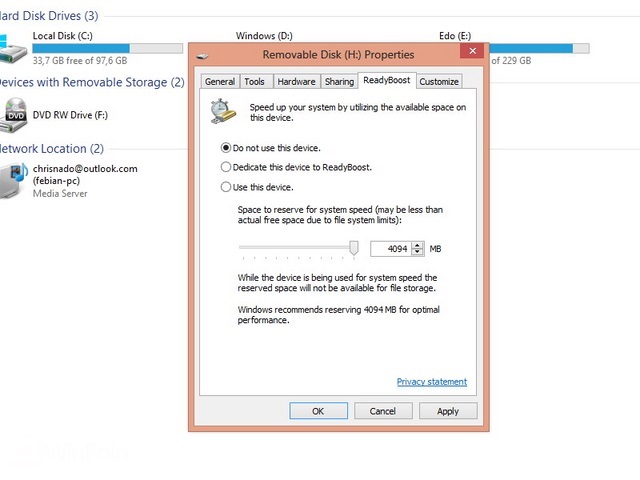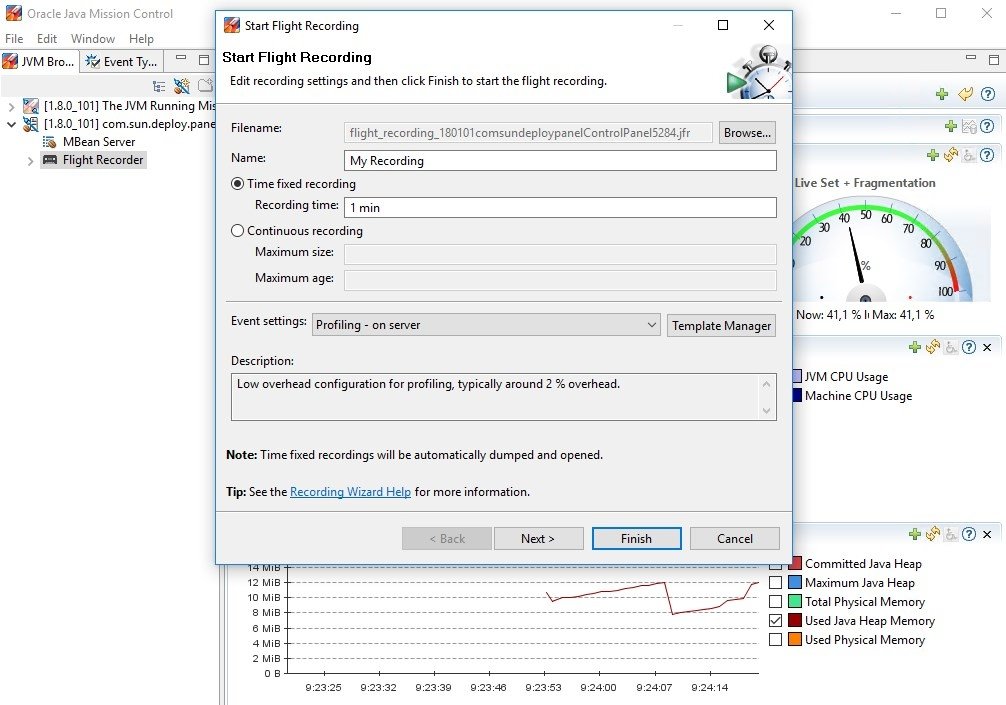Readyboost Windows 7 64 Bit
Windows 7 supports Windows ReadyBoost, originally introduced with Windows Vista. Ready-Boost uses external USB flash drives as a hard disk cache, thus improving disk read performancein some circumstances. Supported external storage types include USB thumb drives asshown in Figure below, SD cards, and CF cards.
Unlike Windows Vista, Windows 7 recognizes that ReadyBoost will not provide a performancegain when the primary disk is an SSD. Windows 7 disables ReadyBoost when readingfrom an SSD drive.
External storage must meet the following requirements:
Method 1# – Delete All External Drive’s Folder From Windows Registry. Actually, I’m talking about is to delete those folders what your windows automatically made when every time you use a new or formatted Pendrive for ReadyBoost in your computer to make a bit use out of it. Using Memory Stick To Give The Computer More RAM. 32 Bit Operating Systems - 4GB 64 Bit Operating Systems - More Than 4GB. Windows 7 ReadyBoost - Duration: 1:25. GetConnected Media 56,565 views. Windows 7 and Vista has a feature coined ReadyBoost which makes use of flash drive storage space for speeding up Windows systems. You might have already noticed it, but in case you have not, just insert any USB Flash drive or flash memory card and you will see the option in the Autoplay dialog.
- Capacity of at least 256 MB, with at least 64 kilobytes (KB) of free space. The 4-GB limitof Windows Vista has been removed.
- At least a 2.5 MB/sec throughput for 4-KB random reads
- At least a 1.75 MB/sec throughput for 1-MB random writes
Unfortunately, most flash storage provides only raw throughput performance statisticsmeasured under ideal conditions, not the very specific 4-KB random reads required byReadyBoost. Therefore, the most effective way to determine whether a specific flash drivemeets ReadyBoost requirements is simply to test it. Windows Vista and Windows 7 automaticallytest removable storage when attached. If a storage device fails the test, Windows willautomatically retest the storage on a regular basis.


Some devices will show the phrase 'Enhanced for Windows ReadyBoost' on the packaging,which means that Microsoft has tested the device specifically for this feature. If you connect aflash drive that meets these requirements, AutoPlay will provide ReadyBoost as an option.
AutoPlay will prompt the user to use a compatible device with ReadyBoost.
Alternatively, you can configure ReadyBoost by right-clicking the device in WindowsExplorer, clicking Properties, and then clicking the ReadyBoost tab. The only configurationoption is to configure the space reserved for the cache. You must reserve at least 256 MB.Larger caches can improve performance, but the ReadyBoost cache cannot be greater than4 GB on a FAT32 file system or greater than 32 GB on an NTFS file system.
Windows Vista and Windows 7 use the Windows SuperFetch algorithm (the successorto Windows Prefetcher) to determine which files should be stored in the cache. SuperFetchmonitors files that users access (including system files, application files, and documents) and preloadsthose files into the ReadyBoost cache. All files in the cache are encrypted using 128-bit AESif the flash storage device is removable, but hardware manufacturers can choose to disableencryption on internal, nonremovable ReadyBoost devices. Because the ReadyBoost cachestores a copy of the files, the flash drive can be removed at any point without affecting thecomputer-Windows will simply read the original files from the disk.
ReadyBoost provides the most significant performance improvement under the followingcircumstances:
- The computer has a slow hard disk drive. Computers with a primary hard disk WindowsExperience Index (WEI) subscore lower than 4.0 will see the most significantimprovements.
- The flash storage provides fast, random, nonsequential reads. Sequential read speed isless important.
- The flash storage is connected by a fast bus. Typically, USB memory card readers arenot sufficiently fast. However, connecting flash memory to an internal memory cardreader might provide sufficient performance.


Computers with fast hard disks (such as 7,200- or 10,000-RPM disks) might realize minimalperformance gains because of the already high disk I/O. ReadyBoost will read files from thecache only when doing so will improve performance. Hard disks outperform flash drivesduring sequential reads, but flash drives are faster during nonsequential reads (because ofthe latency caused when the drive head must move to a different disk sector). Therefore,ReadyBoost reads from the cache only for nonsequential reads.
Note In the author's informal experiments, enabling ReadyBoost on a 1-GB flash drive ona laptop computer with a WEI disk rating of 3.7 decreased Windows startup times by morethan 30 percent. Gains on computers with a WEI disk rating of more than 5 were minimal.
ReadyBoost creates a disk cache file named ReadyBoost.sfcache in the root of the flashdrive. The file is immediately created for the full size of the specified cache; however,Windows will gradually fill the space with cached content.
To monitor ReadyBoost performance, use the System ToolsPerformanceMonitoring ToolsPerformance Monitor tool in the Computer Management console and add the ReadyBoostCache counters. These counters enable you to monitor how much of the cache is currentlybeing used and when the cache is read from or written to. It does not tell you exactly whatperformance benefit you are achieving by using ReadyBoost, however.
